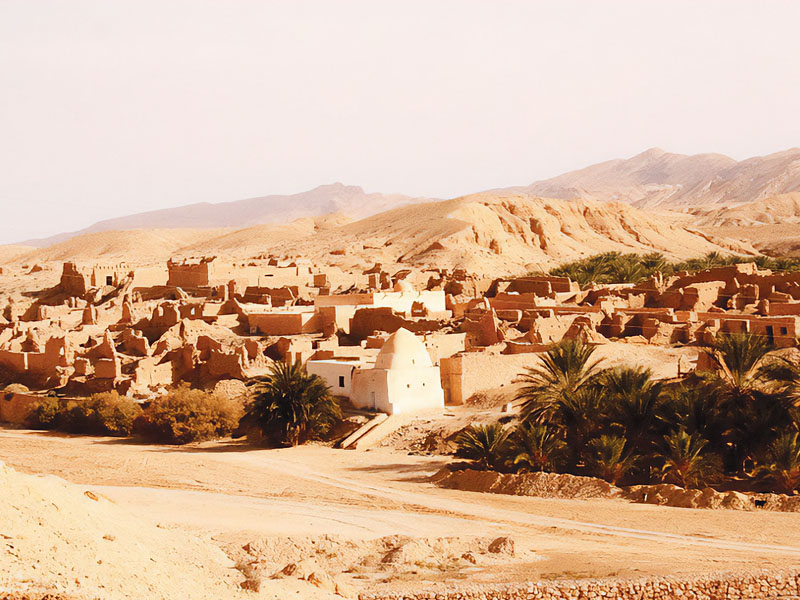Folk Culture Spring 2010 The Palm in the South of Tunisia
Issue 9

Muhie’ddeen Khareef (Tunisia)
The origin of the palm is not yet wellknown. Possibly the eastern parts of the Arabian Peninsula and Iraq are the native places of the palm. The importance of the palm is evident in the Code of Hammurabi (1750 BC.). The palm is a slow-growing tree, and provides a lot of benefits. The Palm exists in two genders: male and female. The pollen, when transferred from male to female, will produce seeds, unripe dates, and dates, successively. There are many types of dates, the most famous of which are Doklat-Nu and Al-Fitaimy. The palm is a long-lived tree, and its products vary according to its type. The author reviews the necessary steps for the leaseholder of the palm garden to do to grow palm. Palms are irrigated from the spring which, in turn, flows into a river that supplies the gardens with water, using a method called “Al-Kadoos”. Al-Laqmy (the palm juice) is a sweet drink extracted from the palm. Also extracted is Al-Jummar (the palm pith), which has a lot of health benefits. Poets use the word “Al-Jummar” to describe stomachs, clavicles and breasts. This article addresses the palm in popular idioms and Arab and folkloric poetry, the necessary climate, benefits of palm and the methods used to plant it. It also addresses the issue of the palm in ancient times and lists its parts and their numerous benefits: root, trunk, ribs, thorn, branch, fiber, date, etc. Moreover, the article sheds light on the palm as a useful source for industry..



































































